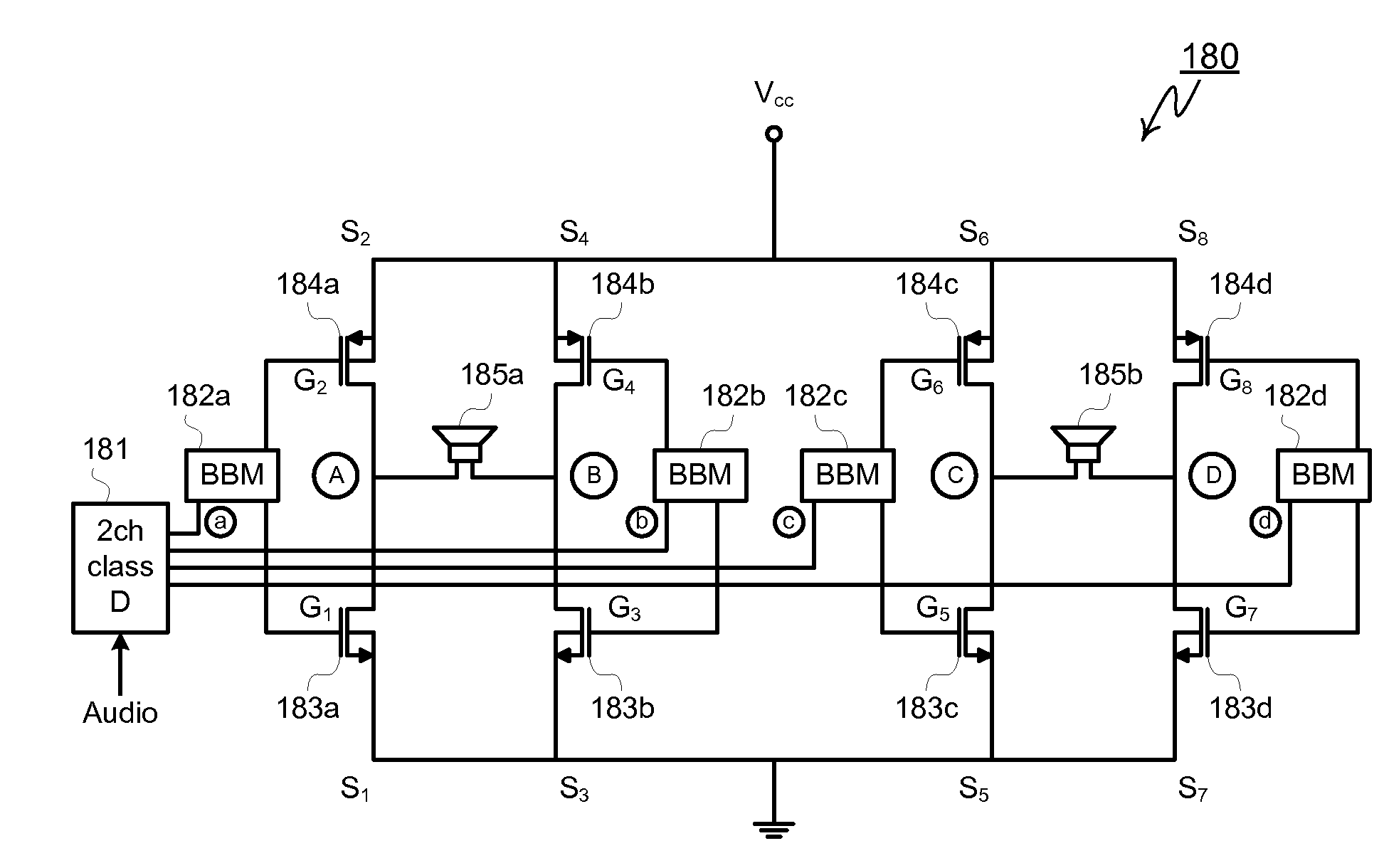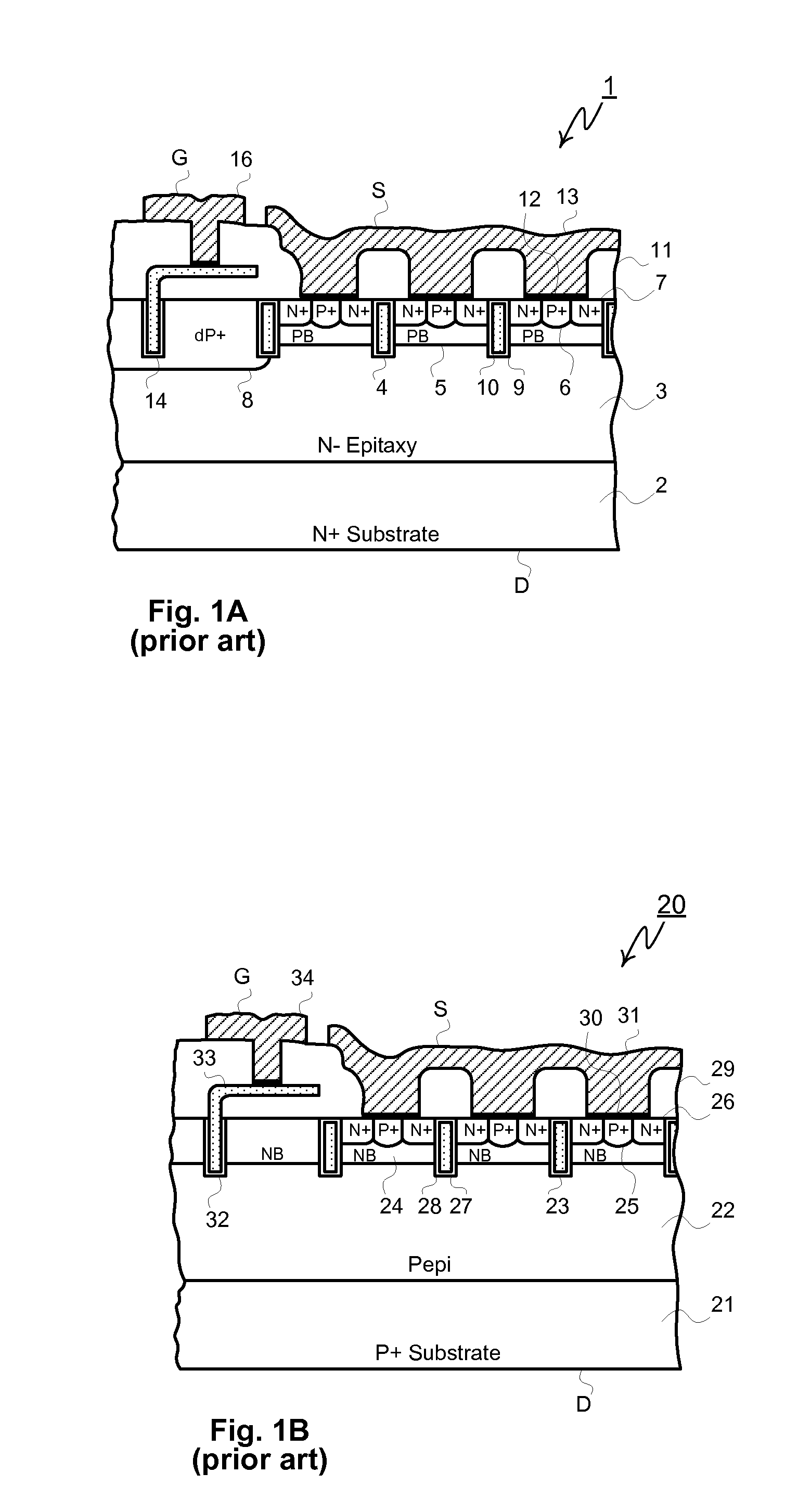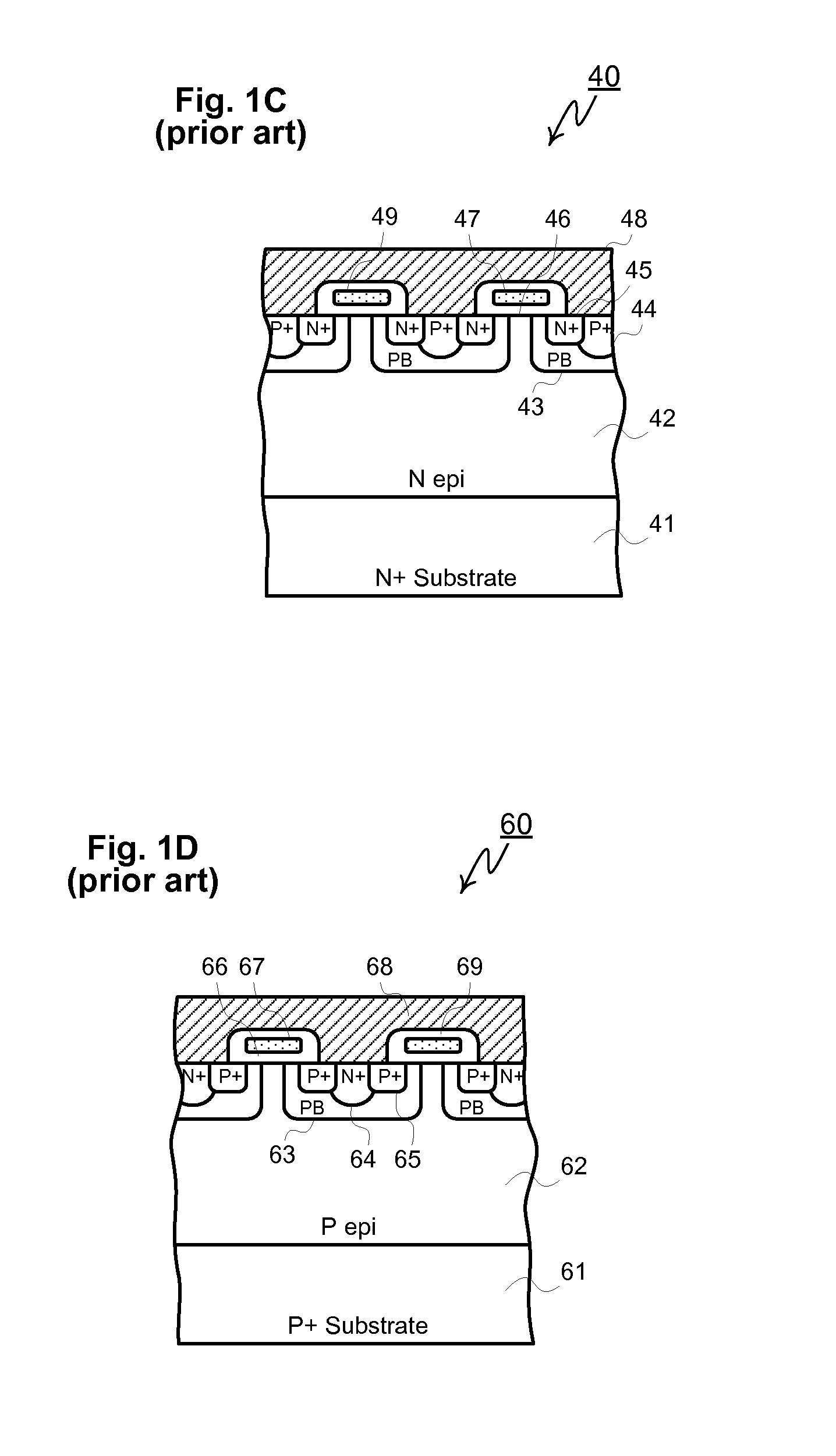Power-MOSFETs with Improved Efficiency for Multi-channel Class-D Audio Amplifiers and Packaging Thereof
a technology of audio amplifiers and power mosfets, applied in the direction of amplifier combinations, low frequency amplifiers, and semiconductor/solid-state device details, can solve the problems of poor efficiency, high fidelity audio amplification using linear amplification, and excessive heating, and achieve low specific on-resistance and simple fabrication techniques.
- Summary
- Abstract
- Description
- Claims
- Application Information
AI Technical Summary
Benefits of technology
Problems solved by technology
Method used
Image
Examples
Embodiment Construction
[0093]Implementation of class-D audio amplification involves several elements, primarily the class D audio signal processing, the gate drive and level shifting circuitry, the DMOS output stage and in some cases a dedicated bias supply for the gate drivers. The disclosed invention considers all of these elements except for the requisite signal processing.
H-Bridge Assembly of Vertical DMOS
[0094]FIG. 4 illustrates a schematic representation of stereo class-D audio system 180 comprising four complementary half-bridge outputs A, B, C and D with a common class D audio signal processor 181. Each complementary half bridge comprises P-channel high-side device 184A through 184D, low-side N-channel 183A through 183D, and break-before-make (BBM) buffer 182A through 182D, to produce outputs A through D respectively. All N-channel DMOS 183 share a common ground-connected source and have separate drain connected outputs. Similarly, All P-channel DMOS 184 share a common Vcc-connected source and hav...
PUM
 Login to View More
Login to View More Abstract
Description
Claims
Application Information
 Login to View More
Login to View More - R&D
- Intellectual Property
- Life Sciences
- Materials
- Tech Scout
- Unparalleled Data Quality
- Higher Quality Content
- 60% Fewer Hallucinations
Browse by: Latest US Patents, China's latest patents, Technical Efficacy Thesaurus, Application Domain, Technology Topic, Popular Technical Reports.
© 2025 PatSnap. All rights reserved.Legal|Privacy policy|Modern Slavery Act Transparency Statement|Sitemap|About US| Contact US: help@patsnap.com



